The name of Timgad sounds fascinating just like an Indian village name! But on a serious note, this Heritage site of Algeria is quite popular among history buffs and travellers who want to discover ancient structures and ruins from the Roman era. Let’s uncover why the Roman ruins of Algeria are on the UNESCO World Heritage list and discover what is the reason behind its downfall!
Timgad – Abandoned Roman City of Algeria
Ancient ruins in Timgad was earlier the famous Roman city of Algeria. When the city was found, it was abandoned but later restored by the government. This city is established in the Aurès Mountains around 35 kilometres east of Batna. Emperor Trajan established the city of Timgad in the year 100 A.D. It was attacked by Berber tribes just after the collapse of the Roman empire. Although due to its ruins, it is one of the most beautiful Roman cities found in Northern Africa.
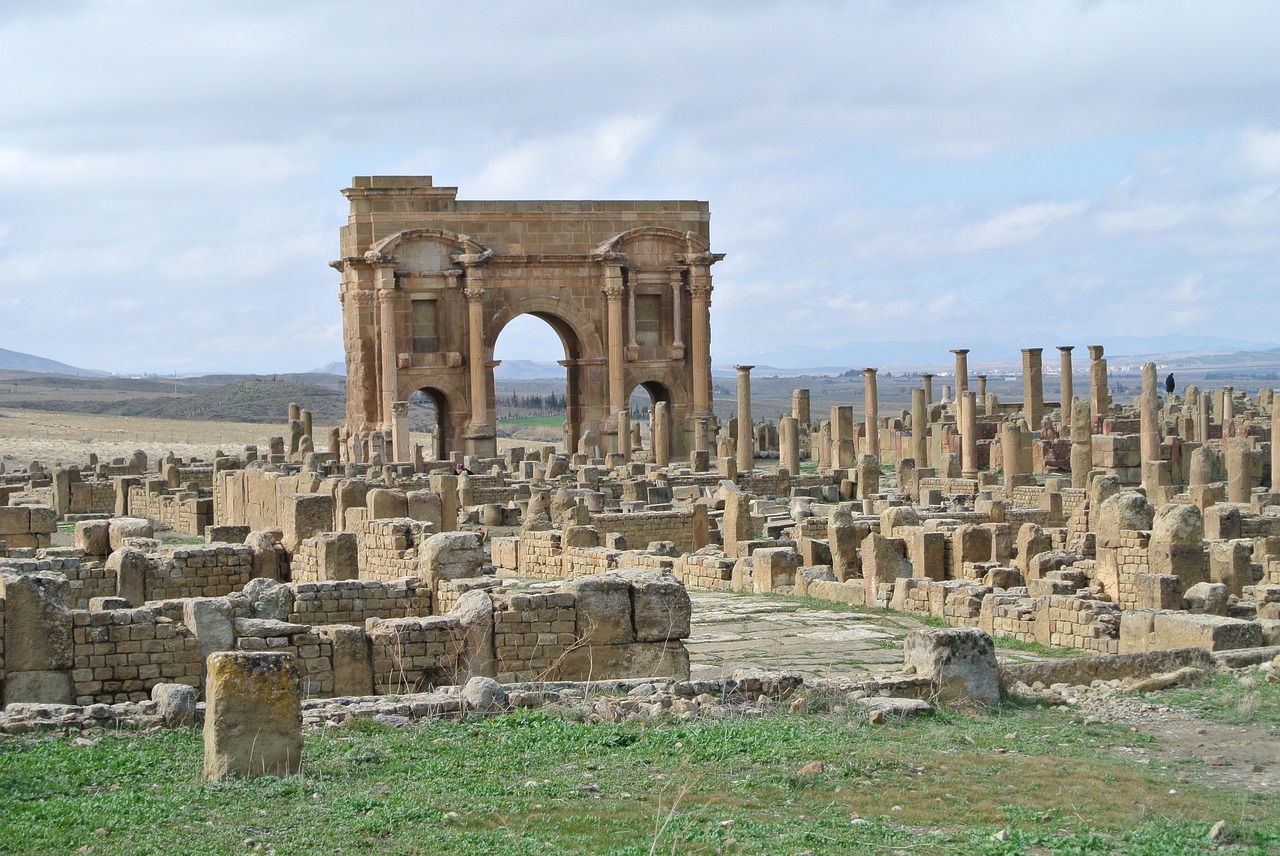
The remains are significant for being one of the best remaining instances of the grid plan as utilised in Roman town planning. It gained the title of the Pompeii of Africa. In 1982, UNESCO designated this as a World Heritage Site and now it is enhancing the tourism of Algeria.
Established on a perfect square grid, it’s a prime example of Roman architecture and designs. If you love to visit ancient towns it was definitely the highlight for you in Algeria.
Why was Timgad built in that location?
As we stated above that Emperor Trajan erected this roman city but the name of the city was given after his mother Marcia, sister Ulpia Marciana and his father Marcus Ulpius Traianus. This archaeological site controlled one of the principal passages across the Aures Mountains to the Sahara Desert. As a result, Trajan, the Roman Emperor, established a military stronghold town here in 100AD.
Also Read: Jesuit Block And Estancias of Cordoba – A Remote Heritage Site
Records Associated With this Heritage City
The Aurès Montagnards destroyed this veteran Roman city at the end of the fifth century. Later in 539, the Byzantine Colonization was protected by a fortification located in the south. They brought back to life some activities in the city, which was guarded by a fortification built to the south using blocks removed from Roman monuments.
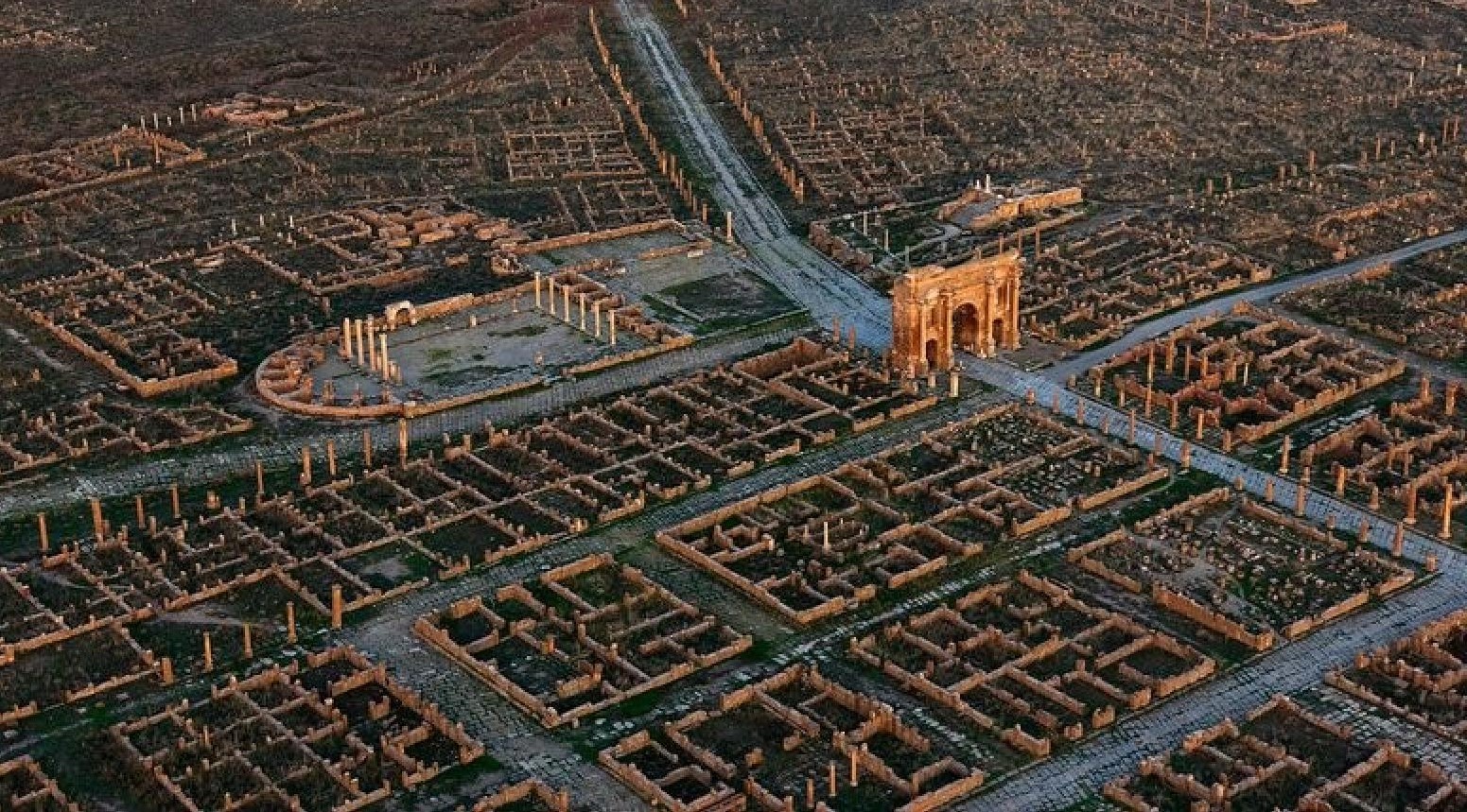
For the first several hundred years, the city was calm, but in the third century, it became a focus of Christian activity, and in the fourth century, it became a Donatist hub. The majestic columns and the ruins of the forum, capitol, residences, and even the toilets have stood for approximately 2000 years.
Point of Attractions at Timgad
The OGEBC undertakes this site protection and management programme in collaboration with the Wilaya Cultural Directorate, which has a cultural heritage service. As soon as you will enter the city from Batna, you have to walk a bit to reach the entire location. There is a museum and few other things which are the highlight of this city.
Starting with the Museum
The road leads from the entrance past the museum, which has been closed to the general public. It houses a very outstanding collection of over 200 mosaics, some of which are nearly the size of a modern house.
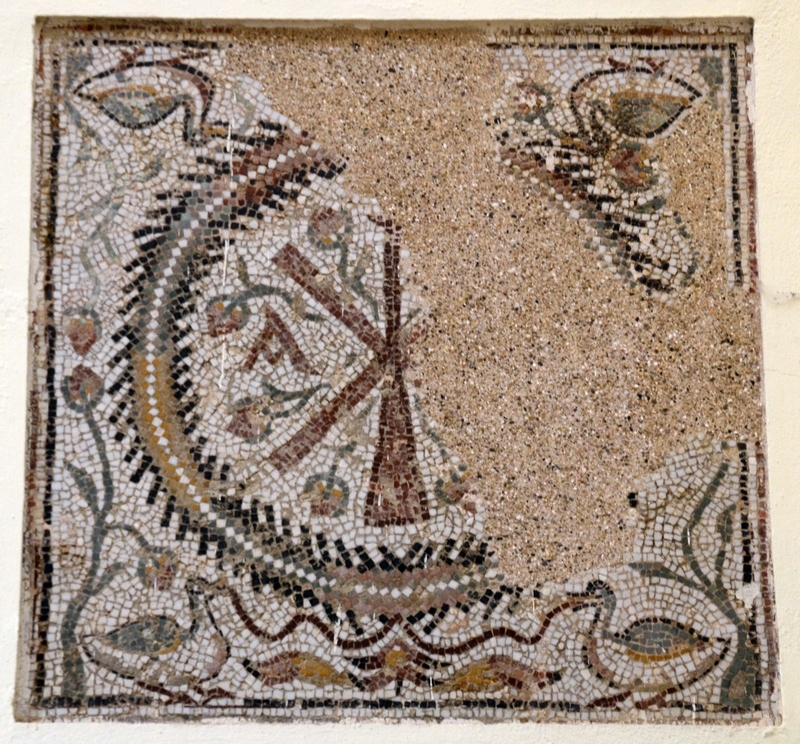
A vast still life with panels, The Triumph of Venus with a grand ornate border and the mosaic of Filadelfis Vita, in which the deity Jupiter follows Antiope, are among the finest.
Move Towards The Great Baths
When you will move further in the northwest direction where you will see the great baths which are not in the good condition. The Great Baths are actually a massive public space with some 40 rooms built beyond the ancient camp walls.
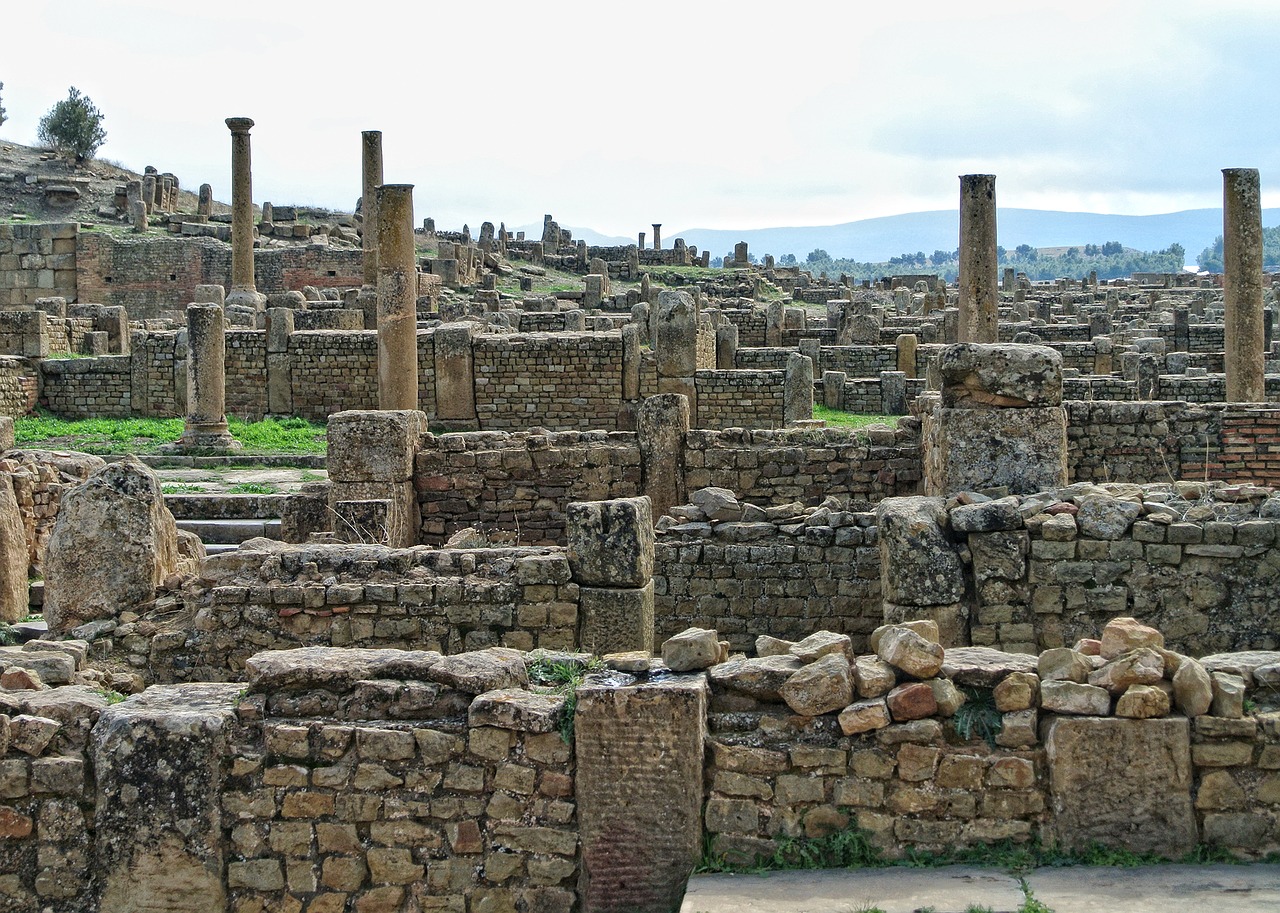
The baths were symmetrical in shape, with identical toilets and hot rooms on either side of the complex. Just beyond this lie the ruins of a magnificent private mansion, indicating Timgad’s wealth.
Also Read: Explore Al Qal’a of Beni Hammad From Algeria
The Library near the centre
When you will reach the centre, this library is the most interesting building on the way. This is one of only two known Roman-period public libraries as one being the Ephesus. The bookshop is there like a semicircular chamber where the books were held. It is the most effective portion of the heritage city.
The Roman Theatre
The theatre, located just south of the forum, was one of Timgad’s civic delights. It was carved out of a hillside in the 1600s and had seats for up to 3500 people in its rows. The majority of what we see now was restored by French archaeologists.
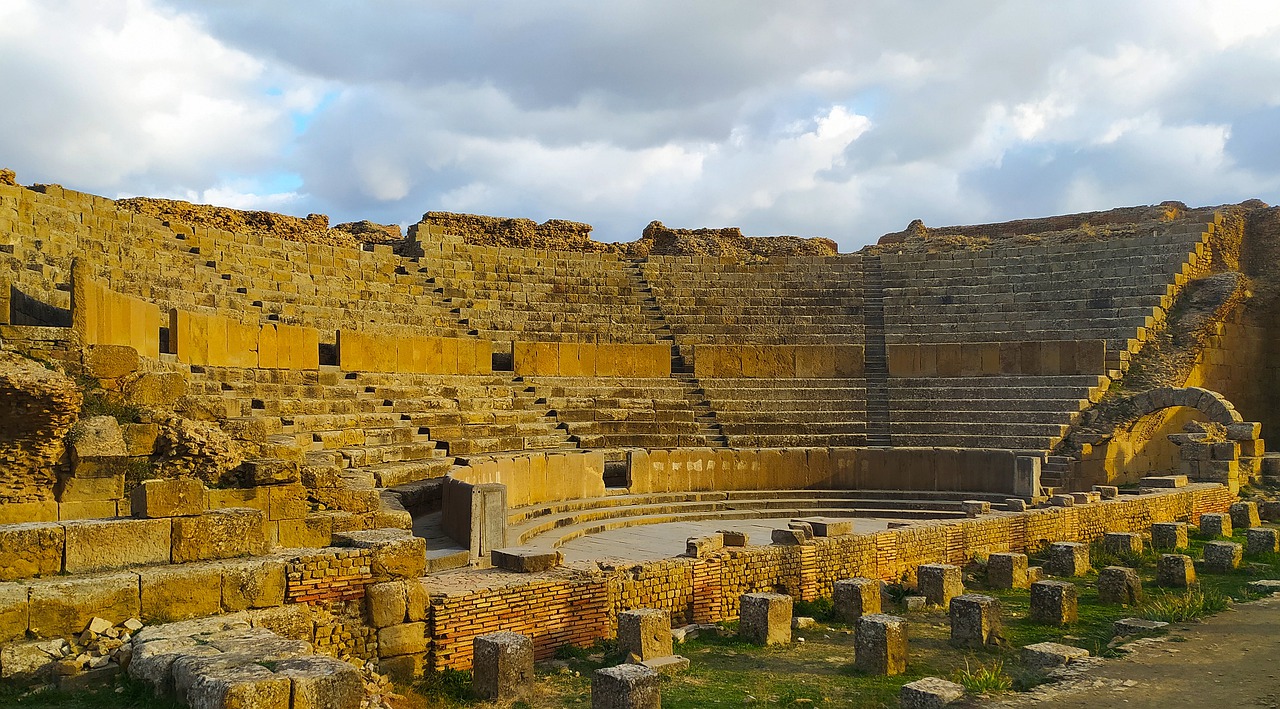
The original was quarried by Emperor Justinian’s soldiers when they built the neighbouring castle in 539. It is the greatest attraction for visitors due to its highest seats and big auditorium. It’s worth strolling to the fort from the theatre, through the pitted path and into the bush. The Byzantines built on the site of a previous temple to the guardian divinity of a water spring, which was located beyond the ancient village.
Trajan’s Arch
Timgad earlier had a western gate, similar to the gates at the other focal points. The original inner gate was replaced by Trajan’s Arch at the beginning of the 3rd century. The three-arch pile, which connects the old and modern towns, is the most exquisite structure of Timgad’s remaining ruins.
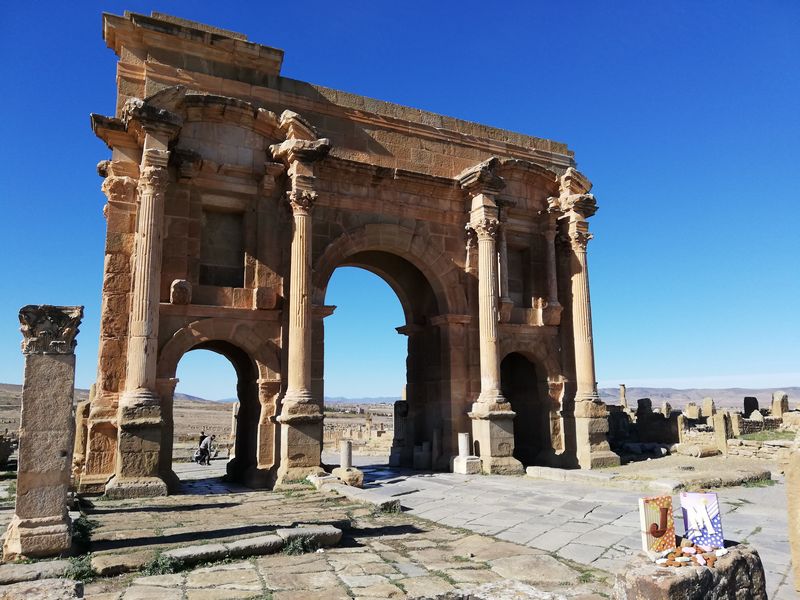
Chariots were allowed to use the high centre channel, which was smoothed out by guiding grooves cut into the rough stones. Pedestrians went beneath a pair of tall columns and the gaze of imperial statues on either side of the arches.
How to Reach Timgad?
Timgad is a little town located far from any major cities of North Africa. Thus it is quite difficult for you to reach here. You can take a bus from Algiers or Constantine for Batna, which is around 50 kilometres from this heritage city. You can then take a bus or a private taxi to Timgad from there.
Much of Timgad, including the area around the fort, has yet to be thoroughly excavated. Thus it is still under the control. Take the permit before exploring this heritage site of Algeria.
Also Read: Know About the Ancient Roman Village of Algeria – Djemila

